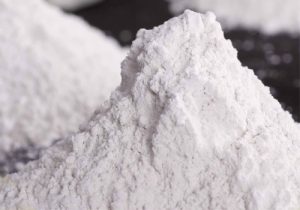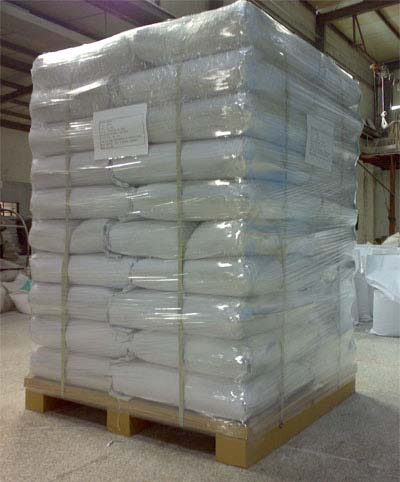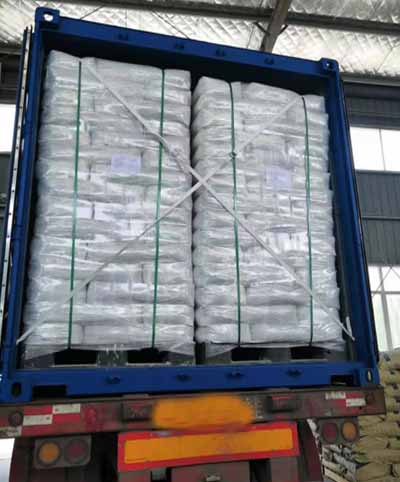
CP-992 Organophilic clay
CP-992 Organophilic Clay, the wet process improved viscosifier and gelling agent . It is a rapidly dispersing.
In organobentonite, we recommend the use of ethanol and methanol as polar activators, and propylene carbonate is also a highly recommended polar activator. Generally we do not recommend the use of benzyl alcohol and methoxypropanol as activators.
The amount of ethanol and methanol used can be up to 10% less than benzyl alcohol and methoxypropanol. This is due to the fact that ethanol and methanol are more polar and require relatively small amounts.

Organoclay Supplier / Manufacturer :
Internet address: https://www.rheologymodifiers.com/
Email address: [email protected]
Whatsapp / Wechat: +86-13185071071
Organophilic Clay Supplier / Manufacturer :

CP-992 Organophilic Clay, the wet process improved viscosifier and gelling agent . It is a rapidly dispersing.

CP-982 Organophilic Clay is an amine treated bentonite with a moderate temperature performance.

CP-150 Organophilic Clay is a self-activating organoclay that disperses easily and performs well in diesel, low aromatic mineral oil, modified vegetable oil, and synthetic base fluid formulations.

CP-10 organoclay is a rheological additive made of organoclay. It is used in non-polar to moderately polar aliphatic and other solvent systems

CP-MPZ organoclays is an modified bentonite that is used in solvent and resin systems ranging from non-polar to highly polar.

The CP-MPS rheology modifier is a type of organo clay rheological additive that is used in solvent and resin systems ranging from non-polar to high polarity.




CP-EW Organoclay for Water Based paint. It is primarily employed in water borne paint systems,such as latex paint. So it is a good water based additive in paints,coatings,grease etc.

CP-EWS Modified bentonite It is employed in a water-borne coatings system. CP-EWS organoclay outperforms CP-EW in terms of thixotropy, transparence, and dispersion.

CP-WBS Rheology Modifier is rheological modified bentonite. It is mostly employed in water-borne systems.
organoclay polar activator | Organophilic Clay CP-2 also named amine treated Bentonite.
In diesel oil based fluids,organophilic clay viscosifier CP-2 are used to increase carrying capacity and suspension properties, providing support for weight materials and improved cutting removal. Organophilic bentonite also aids in filter-cake formation and filtration control.
Properties
Composition Organically modified bentonite clay
Physical appearance Off white to tan free-flowing powder
Moisture content (105℃,2hr) ≤4%
Particle size (<76μm or 200mesh) ≥95%
Specific Gravity 1.6-1.8
Advantages
Effective viscosifier and gellant
Aids control of fluid loss to the formation
Increases emulsion stability
Improves cuttings carrying and hole cleaning capacity
Suspends weighting materials and other solids
Confers temperature stability to the fluid
Application
Base oil:
Diesel Oils
Crude Oils
Mineral Oils
Synthetic Oil
Viscosifying drilling Fluids:
Oil based drilling fluids
Invert emulsion fluids
Workover fluids
Completion fluids
Casing packs
Packer fluids
Spotting fluids
Package
Organoclay | Organophilic Clay CP-2 is packed in 50lb(22.7kg) or 25kg/bag or customized,multi-wall paper sacks or Kraft paper bag with PE liner or customized.
Storage
CP-2 Store in a dry, well-ventilated area with temperature of 0℃-30℃. Keep container closed. The quality guarantee period is 24 months.
Notice
The information on use is based on data which are believed reliable, but any recommendation or suggestion made is without guarantee or warranty, since the conditions of use are outside our control. All products are sold on the conditions that purchasers shall make their own tests to determine the suitability of such products for their purpose and that all risks are assumed by user. We disclaim any responsibility for damages resulting from careless or improper handling or use. Nothing herein is to be taken as permission, inducement or recommendation to practice any patented invention without a license.
Internet address: https://www.rheologicaladditive.com/ and email address: [email protected]
Whatsapp / Wechat: +86-13185071071
organoclay polar activator
Relatively inexpensive and easy to obtain activation is the biggest advantage of ethanol and methanol as activators, while volatile, easy to process, colorless and odorless, will not affect the performance and appearance of the final product.
organoclay polar activator should be used in formulations as soon as possible to avoid the reduction of activity caused by long time storage. When used in formulations, the dosage needs to be adjusted according to specific conditions to achieve the best rheological properties and suspension stability.
The use of ethanol and methanol requires attention to safety protection, because they are flammable and volatile organic solvents, long-term exposure will be harmful to the human body. They should be operated in a well-ventilated environment and direct skin contact should be avoided.
organoclay polar activator
Benzyl alcohol and methoxypropanol are not recommended as polar activators for organoclay because they are toxic and may be harmful to humans and the environment. Prolonged exposure to these substances may cause skin and respiratory irritation, sensitization and other health problems.
organoclay polar activator
They can also pollute the environment and affect the balance of the ecosystem. Strict safety and environmental protection measures are inevitably required for their use and handling. High volatility is also Benzyl Alcohol and Methoxypropanol Affects product performance and stability.
Compared to ethanol and methanol, these two substances may be more costly and less available, affecting the economics of production and application. Therefore, we recommend that you use ethanol, methanol and propylene carbonate as your primary polar activators.
Ethanol and methanol are both highly polar solvents that can effectively interact with the polar groups in the organoclay to promote the insertion of organic modifiers and the swelling of the clay interlayers.
They have relatively low molecular weights, which helps them to better penetrate between clay layers and improve activation efficiency. And their high volatility means that they can be removed from the system relatively easily after the activation process, leaving no residue.